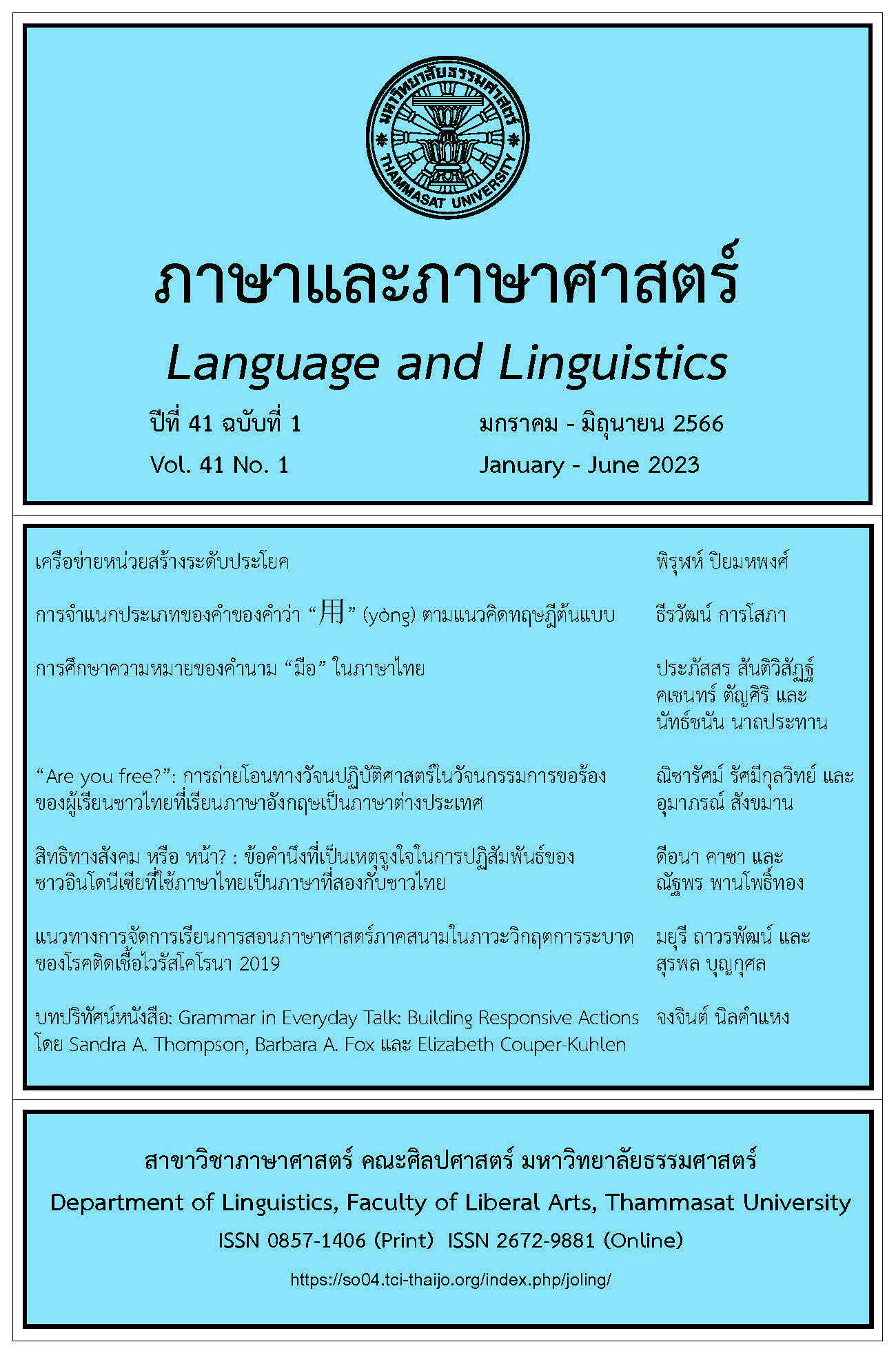Book Review: Grammar in Everyday Talk: Building Responsive Actions by Sandra A. Thompson, Barbara A. Fox and Elizabeth Couper-Kuhlen
Main Article Content
Abstract
Languages are the most important communication tools for mankind. One of the basic forms of daily communication is conversation. Exploring the language used in naturally occurring conversation is an effective way to a better understanding of the components of language. The book Grammar in Everyday Talk: Building Responsive Actions, by Sandra A. Thompson, Barbara A. Fox and Elizabeth Couper-Kuhlen provides an insight into American English grammatical patterns used for building responsive actions in everyday conversations. Adopting an interactional linguistics approach, the book investigates four types of sequences of initiating acts which are: information-seeking sequences, informing sequences, assessment sequences and request-for- action sequences. The authors of the book employ the conversational analysis method to analyze the roles of six types of short and long grammatical patterns in building responsive actions and examine how each grammatical pattern conveys meaning and shapes the trajectory of a conversation. The results indicate that the six types of grammatical patterns and their meanings are used in relation to types of adjacency pairs, roles and positions of the initiating and responsive actions in conversational sequences. These findings underpin the concept of a positionally sensitive grammar. The reviewer believes that this book is useful for linguistics students as well as researchers and English instructors who teach English as a second language.
Article Details

This work is licensed under a Creative Commons Attribution-NonCommercial-NoDerivatives 4.0 International License.
บทความทุกบทความเป็นลิขสิทธิ์ของภาษาและภาษาศาสตร์
References
Fox, B. A., & Thompson, S. A. (2010). Responses to wh-questions in English conversation. Research on Language and Social Interaction, 43(2), 133-156. https://doi.org/10.1080/08351811003751680
Thompson, S. A., Fox, B. A., & Couper-Kuhlen, E. (2015). Grammar in everyday talk: Building responsive actions. Cambridge University Press.
Schegloff, E. A. (1996). Turn organization: One intersection of grammar and interaction. In E. Ochs, E. A. Schegloff, & S. A. Thompson, (Eds.), Interaction and grammar (pp. 52-133). Cambridge University Press. https://www.researchgate.net/profile/Emanuel-Schegloff/publication/299534818_Turn_organization_One_intersection_of_grammar_and_interaction/links/5873e8fb08ae6eb871c661c9/Turn-organization-One-intersection-of-grammar-and-interaction.pdf
Selting, M., & Couper-Kuhlen, E. (Eds). (2001). Studies in interactional linguistics. John Benjamins. https://doi.org/10.1075/sidag.10
Sidnell, J. (2010). Conversation analysis: An introduction. Wiley-Blackwell.
Tomasello, M. (2008). Origins of human communication. MIT Press.


